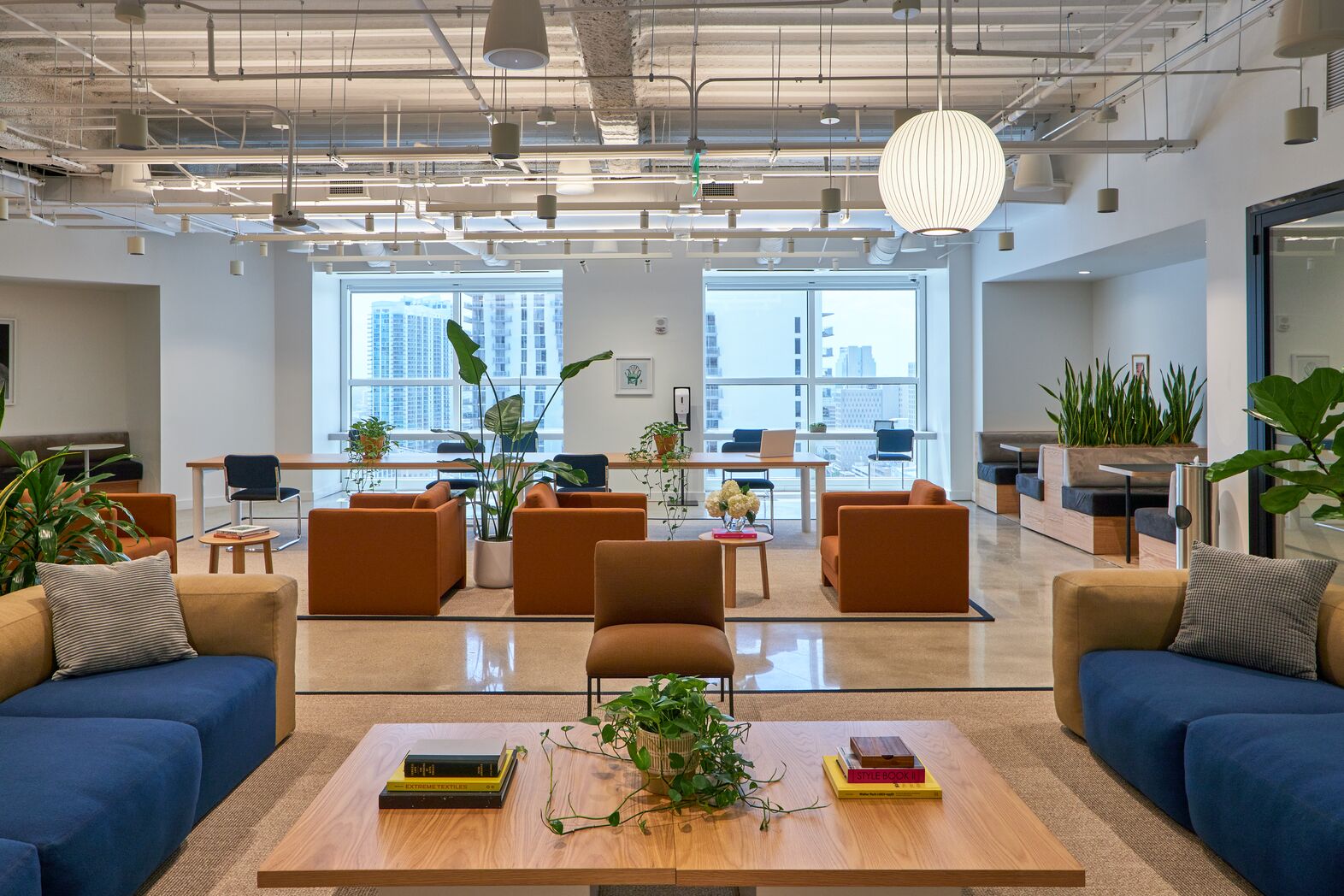Anyone who’s traveled to the US will be familiar with the most common visa types. If you’ve visited friends or relatives, taken a business trip, or vacationed in the US, you’ll have gone through the visa application process or traveled under the Visa Waiver Program.
- What is a work visa?
- How can I get sponsorship for a US work visa?
- Types of US nonimmigrant work visas that need employment sponsorship
- Types of US immigrant work visas that need employment sponsorship
- How much does US work visa sponsorship cost?
- What is a sponsorship letter?
- How WeWork can help with employee relocation
A visa is a travel document issued by a country to a visitor, giving them permission to enter and remain in the country for a limited time and for a specific reason, such as tourism, journalism, study, or work.
Things get more complicated when it comes to work visas. These types of visas allow visitors to carry out work for a US employer while they’re in the country, most commonly on a temporary basis but sometimes permanently. There are many different types of work visa, and most of them require that you have a job offer and employer sponsorship before you arrive in the country.
Obtaining a US work visa is complex and requires legal expertise. Our basic guide touches on the most important things you need to know before starting the process. But keep in mind that the information in this guide is for general informational purposes only and doesn’t constitute legal advice. All of the latest official guidance and additional details can be found at travel.state.gov.
What is a work visa?
Work visas comprise a large portion of the almost 200 different types of visas in the US. Generally speaking, they allow a foreign national to enter and work in the United States either permanently or for a specific period of time. They might come in the form of a printed document, a passport stamp or sticker, or an electronic record.
A work visa is distinct from a work permit, which is a legal document endorsing an individual who’s already in the US to work without restriction. A work permit does not grant a person permission to enter the US, whereas a work visa does.
How can I get sponsorship for a US work visa?
Before you can even apply for a US work visa, you must have a job offer from a specific US employer. The employer will then sponsor your visa by filing a petition with the US Citizenship and Immigration Services (USCIS). This type of work visa is part of a wider category of visas called petition-based visas.
If the petition is approved, you then have permission to apply for a work visa at a US consulate or embassy in your native country. The requirements for a work visa vary depending on the type of visa you’re applying for, but most work visa applicants must meet the following general requirements:
- You must have a job offer from a US employer
- Your job must be in a field that is included on the list of eligible occupations for work visas
- You must have the required education and/or work experience for the job
- You must be able to prove that you will return to your home country after your work visa expires
Types of US nonimmigrant work visas that need employment sponsorship
Nonimmigrant work visas are designed for people who intend to work in the US temporarily before returning home.
Unlike a simple, 90-day B-1 business visa—which permits business travelers to enter the country for things like contract negotiations, meetings, conferences, and conventions—a nonimmigrant work visa can remain valid for many years. They typically require sponsorship from a US employer, and they must be renewed if the worker wishes to continue working in the US.
Here’s an overview of some of the main types of nonimmigrant and petition-based work visas. A comprehensive list can be found at travel.state.gov.
H-1B
The most popular type of US work visa is the H-1B. This visa allows companies to hire highly skilled foreign workers in specialty fields, such as architecture, science, medicine, engineering, and information technology. The number of applicants is capped each year, and workers must hold at least a bachelor’s degree (or equivalent) in their chosen field.
A typical H-1B visa allows an individual to work in the US for three years, extendable to a maximum of six. Workers don’t have to stay with the employer who first sponsored them, meaning they can switch jobs after entering the US so long as their new employer can sponsor another H-1B visa.
L-1
Also called an Intra-Company Transfer Visa, this visa is for temporarily transferring an employee to a US branch or subsidiary of their current employer. The employee must be an executive or manager with specialist knowledge and have been employed by the company abroad for at least one year. An L-1 visa is often used when companies are expanding into the United States with a satellite office.
O-1
This visa is for people with extraordinary ability in their field, such as artists, athletes, movie stars, and television personalities. To meet this standard, applicants must be able to demonstrate what makes them “extraordinary”—they might have authored a series of scholarly articles in major scientific journals, starred in a box-office hit, or won an Olympic medal. Regardless of how internationally acclaimed the individual is, O-1 visa holders still require employment sponsorship to enter the US.
Types of US immigrant work visas that need employment sponsorship
Immigrant work visas are designed for people who intend to live and work in the United States permanently. These work visas are almost always issued before the holder receives their green card, meaning they become Lawful Permanent Residents of the United States.
The process of moving to the US on an employment-based immigrant visa is complex and can take a long time. Applicants need a job offer to be considered eligible, after which their US employer must go through a rigorous set of sponsorship steps before the application process can even begin.
Immigrant work visas are divided into five categories, with the highest preference given to priority workers:
- First: Priority workers
- Second: Professionals holding advanced degrees and persons of exceptional ability
- Third: Professionals and other workers
- Fourth: Certain special immigrants
- Fifth: Employment creation/investors
How much does US work visa sponsorship cost?
Getting a US work visa can be expensive, and the cost varies depending on the type of work visa required, the size of the company, and how many of the company’s existing employees are there on a work visa. The sponsoring employer will cover most of these fees, but the employee may have to pay a portion of it as well.
The most common fees for nonimmigrant work visa sponsorship are:
- Petition fee: $460
- Application fee: $190
- American Competitiveness and Workforce Improvement Act charges: $750 to $1,500
- Fraud Prevention and Detection fee: $500
- Added fee for companies with more than 50 employees, where half are foreign nationals: $4,000
The full list of US work visa filing fees can be found on the official USCIS website.
What is a sponsorship letter?
A sponsorship letter is a document from a US employer that outlines the terms of your job offer and the sponsorship arrangement. It’s an important part of the work visa application process, and it’s one of the first things the USCIS will ask for when they receive your petition.
How WeWork can help with employee relocation
If your business is launching a satellite office in a new city or looking to relocate employees, WeWork can help your teams hit the ground running with flexible coworking space solutions that scale to suit your organization’s changing needs. They include private offices, office suites, and more. For even more flexibility for your employees, they can work from beautifully designed coworking spaces in hundreds of locations with WeWork All Access.
And for last-minute flexibility, WeWork On Demand lets employees access workspaces and meeting rooms by the hour in cities around the world, without a monthly commitment.
Steve Hogarty is a writer and journalist based in London. He is the travel editor of City AM newspaper and the deputy editor of City AM Magazine, where his work focuses on technology, travel, and entertainment.
Want to learn more about flexible work?










